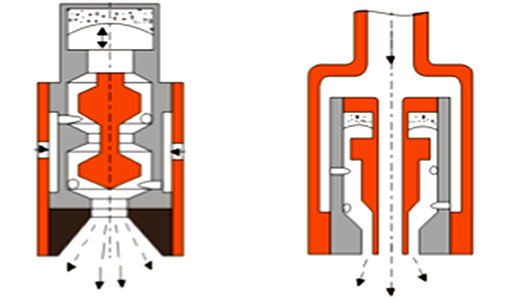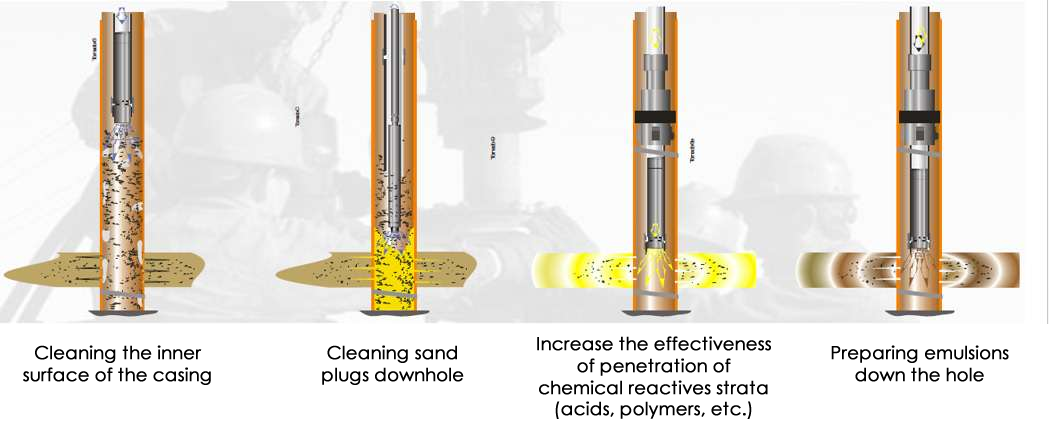Vibratory Impact Waves (VIWTM) is a technology stimulation and oil recovery through vibrational waves. It was discovered in Russia in 1986, where it was developed as a tool for stimulation of oil and gas based on the theory of vibro-fracturing.
The VIWTM includes a pulse generator Vortex hydrodynamic downhole in a pulse device and a jet pump which are activated with a conventional pump head well.
The VIWTM creates hydrodynamic pulses with variation in amplitude and duration, affecting the rocks and fluids in the reservoir.

The working principle of the tool is based on the formation of vibratory impact waves transmitted through a workflow. The computer is a tool that converts a steady stream of liquid in a pulsating flow.
The tool design is composed of cameras double centrifugal vortex, which are used to cause flow tangential fluid, and a hydraulic accumulator, in which elastic energy is concentrated, no moving parts which increases their reliability and effectiveness.
.
The liquid from the pump enters into the double centrifugal vortex chamber, where the liquid is subjected to centrifugal forces causing the Tornado effect, during this phase there is no passage of fluid from the tool to the strata through the vortex generating a flow resistance of the liquid to the outside while the energy is concentrated in the tornado effect.
Aplication of VIW™:

¿Why the VIW™? :
- Cleaning and stimulation for integral development and increased well productivity.
- Tool pre-calibrated on the surface both for amplitude and frequency (pressure and depression) according to the technical task scheduled.
- At the beginning of the well: face cleaning of the filtering formation of the drilling mud and plasters produced during cementing.
- In the mature stage of the well: ensuring selective well stimulation of fluid penetration up to 50 meters radially by converting flows in hydrodynamic flow pulses, influencing all rocks and fluids present in the reservoir.
